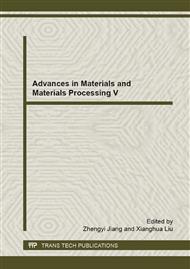p.549
p.556
p.561
p.569
p.573
p.579
p.583
p.593
p.598
Erosion Study of Silica Phenolic Nozzles with Graphite Inserts in Solid Rocket Motors
Abstract:
Experimental and theoretical studies on the erosion of silica phenolic nozzles with graphite inserts in solid rocket motors were carried out. Two identical segmented nozzles, consisting of graphite inserts and silica phenolic insulation in the convergent and divergent sections, were tested at same operating condition. Due to the different thermal resistance ability, steps are formed at the interface of two materials. The erosion rates, following the distribution of Reynolds number, exhibit an upward trend in the convergent section and decrease in the divergent section for both silicon phenolic and graphite. At high temperature, the graphite erosion rate is limited by the diffusion rate of the oxidizing species,while the erosion rate is limited by the chemical kinetics at low temperature. For the graphite nozzle insert, a switch from kinetics mechanism to diffusion mechanism occurs in the convergent section during the firing test.
Info:
Periodical:
Pages:
573-578
Citation:
Online since:
March 2015
Authors:
Keywords:
Price:
Сopyright:
© 2015 Trans Tech Publications Ltd. All Rights Reserved
Share:
Citation:


